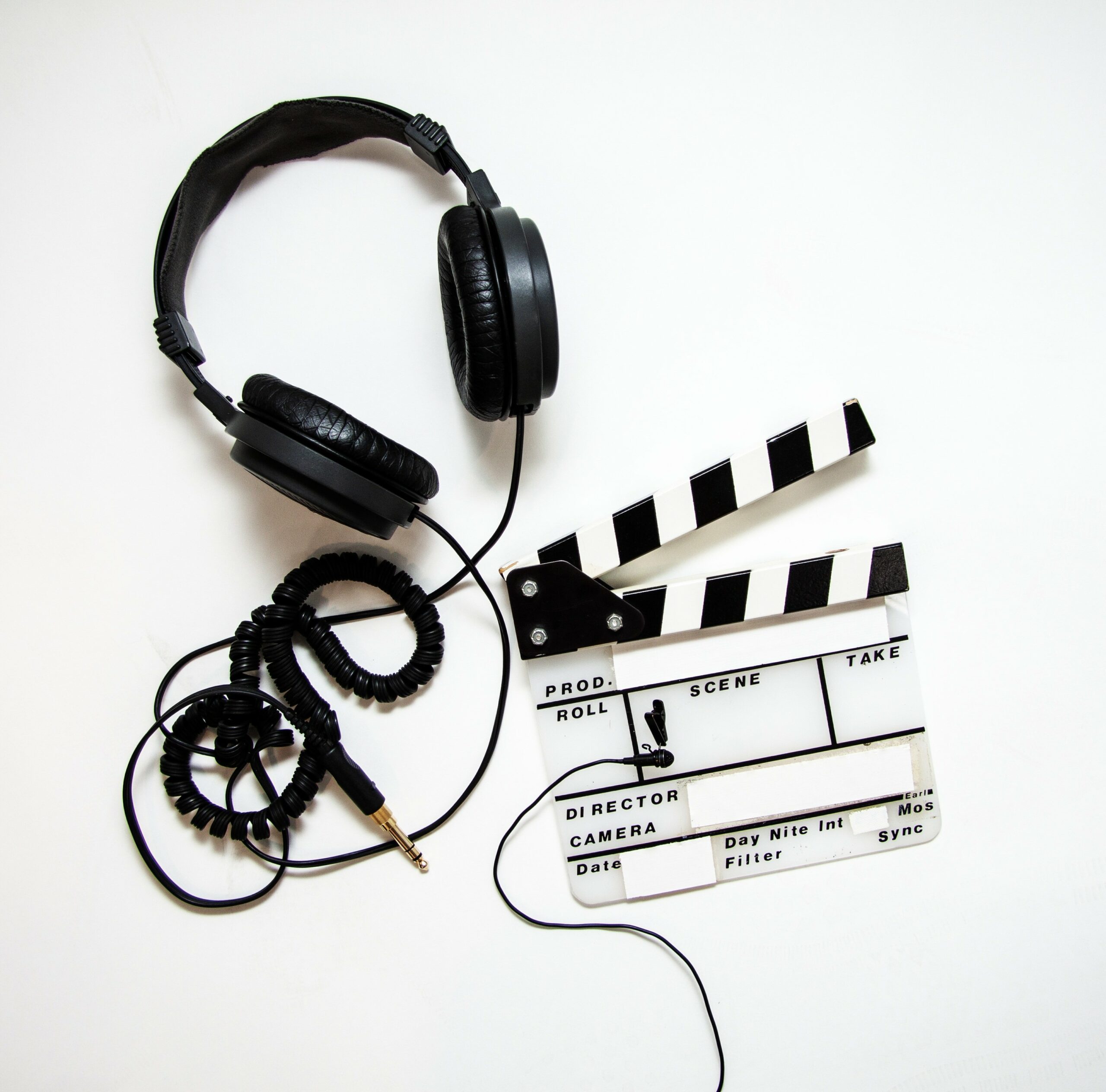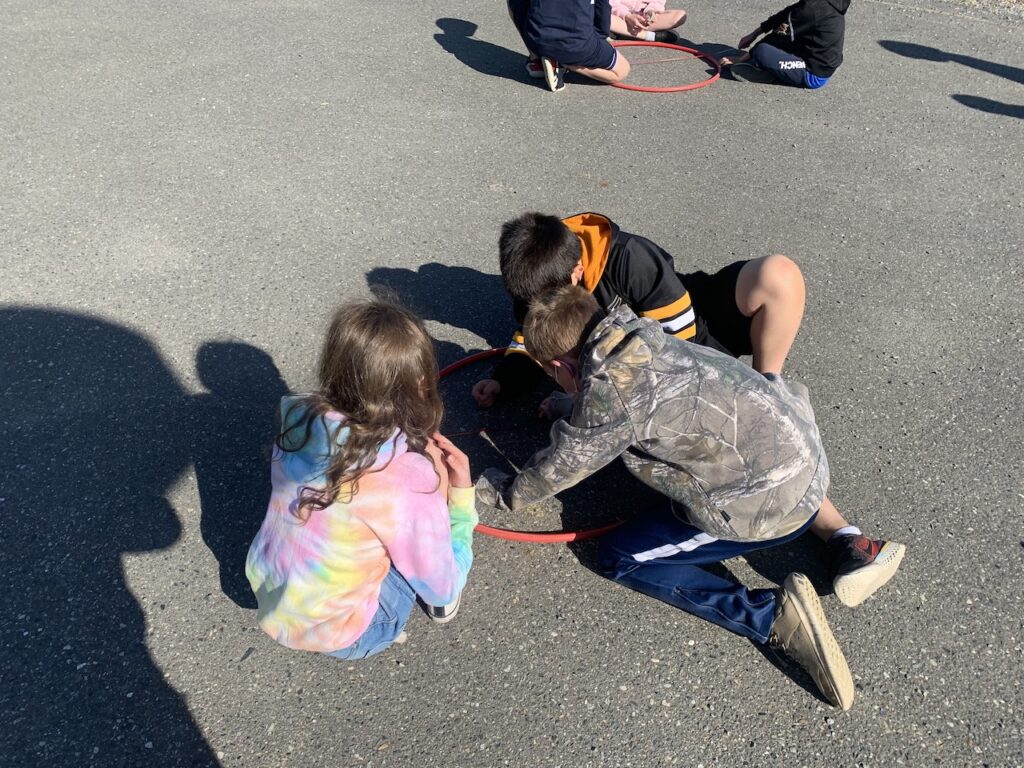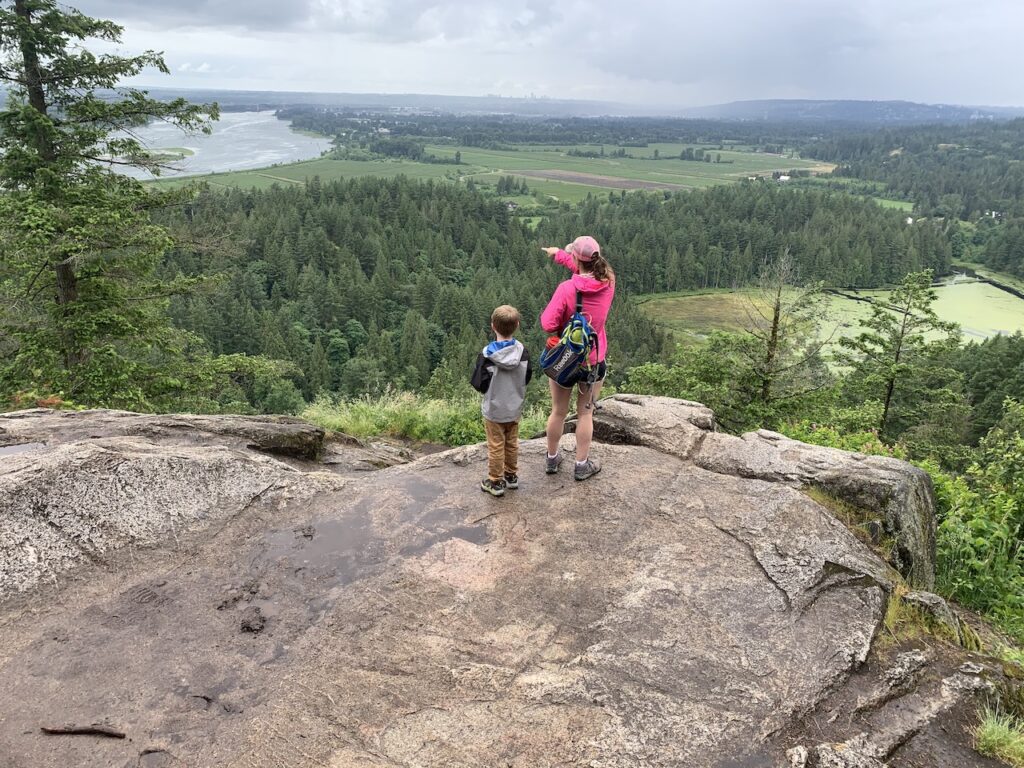One of my biggest takes always from my current course is that math does not have to be confined and should not be confined to our traditional paper and pencil math. Something that I am looking forward to doing more of in the next few weeks before the end of the year is taking math outside. There are many ways to bring math outside and to engage students in outdoor math. Being outside is engaging for students, it’s a different environment and you can’t underestimate the positive impact of sunshine and fresh air or living on the wet coast like I do just the fresh air. My inspiration for this post comes more from a recent hike with a friend of mine and her stepson. It was a typical wet Sunday in Junuary, but we all had too much energy to stay inside and met at a local park for a walk for the adults and a hike for the young explorer. As we walked, we came across all sorts of learning opportunities and I held myself back from using them all, but my teacher brain was going a 100 km/h. so instead of overwhelming a boy I don’t know well with my millions of ideas I observed how he interacted with the forest around us. I’m teaching a nature-based summer session this July for three weeks and will put all my ideas to good use then.
Some of the things I came up with as we walked:
- Estimate
- Being outside is a great time to practice estimation.
- How tall is that tree?
- How old is the tree?
- How high is the rock?
- How much further
- Take time if possible, to get the information and compare you your estimate.
- Being outside is a great time to practice estimation.
- Making observations
- Use all five senses to make observations
- Ask children questions about what they notice or wonder.
- Encourage kids to record their observations and wonders
- Non-standard measurements
- Many curriculum documents in elementary specified non-standard measurements. Why not measure in steps, sticks, rocks, or even the child themselves.
- Mapping
- Teach children to use maps and understand the map scale. For many hikes the topographic map has a lot of great opportunities for math built in. Distance between places, slopes and changes in slopes, elevation, finding the best path up a mountain uses a lot of math to figure out where the slope is gentlest.
- Counting
- There are many opportunities to count when we are outdoors from tree species, to interesting birds and wildlife or imagined monsters we encounter and must defeat on the trail.
- Measurement
- Our playgrounds present a wide variety of opportunities for students to measure using non-standard as discussed above and standard measurements. In the fall my students wanting to know how many laps of the track makes 1km measured our gravel km club track to be 250m using tape measures laid end to end. While this took as a whole afternoon and some debate about what would work best, they solved the problem and came up with good measurements.
- Math scavenger hunts
- Kids love scavenger hunts and trying to find things so why not make it math based. Go on an array hunt during a neighbourhood walk and have students use iPad to take pictures of the arrays they see around the school, parking lots, windows, gas stations, stores and parks are all home to arrays. Younger students could go on a shape hunt trying to find different shapes in nature or their neighbourhood, houses, cars, signs, and pets could all help show the shapes. My class has recently gone on a fractions and decimals walk looking for examples of both in our neighbourhood, we found decimals on the gas station sign and the fast-food restaurant menu and fractions of sets in garden beds, the parking lot, and the playground.
In my own classroom I try to go outside as much as possible and recently taught a fractions lesson on the basketball court. My students were working on a three-act task to share a pizza evenly between two people. Instead of drawing it on our vertical surfaces we took it outside and used hula-hoops as our pizzas and chalk to cut it up. This opened a world of discussions over what was the easiest to share, which was easiest to eat and how many pieces would be too many. We decided the most efficient was half, sixths or eights were best to eat and anything above tenths the slices were too small.
Getting students outside and looking for patterns in nature, finding the math that jumps out at you from the bushes builds connections between the classroom and the “real world”. This also brings in opportunity to draw on the First People’s Principals of learning, being connected to the land and place based. Part of using First People’s principals is making them authentic and part of our day-to-day learning and thinking. Finding opportunities to engage in nature uses these principals.













